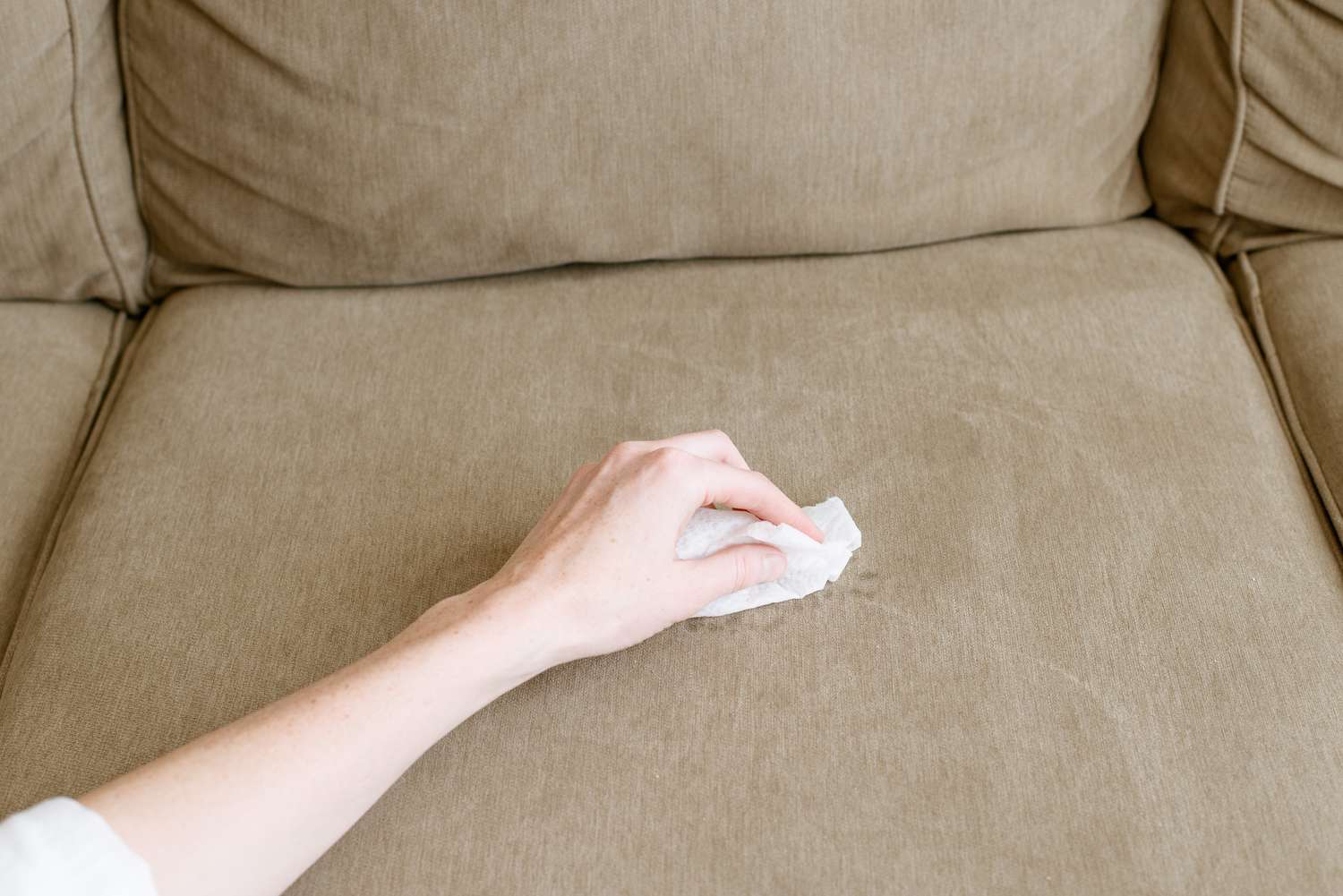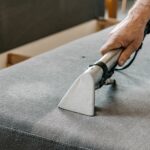Flopping down on the sofa with a takeaway or pizza, and binge watching your favourite box set, is the ideal way to mark the end of a long, busy day for many. Tempting as this might sound, however, you run the risk of greasy food and finger marks ending up on your upholstery, making the end to the day not as perfect as you’d imagined. Fortunately, with our greasy stain removal from sofa top tips, your day doesn’t have to end in disaster.
1. Take immediate action
When grease ends up on your sofa, don’t wait until the end of the show you’re watching, or until the next morning, to attend to it. The longer the greasy marks persist, the harder they will be to remove, and the more damage they might cause your upholstery, so prompt action is the key to successful stain removal.
2. Remove excess liquid or solids
To remove the greasy stain from your sofa, firstly get rid of any excess liquid or solids by gently scraping them up with a spoon or blunt plastic knife. Avoid pushing the stain deeper into the sofa or spreading it any wider than it already is.
3. Blot the stain
Once as much of the solid material has been removed from your upholstery, blot the area with a clean, damp cloth. This will help to soak up some of the grease.
4. Absorb the grease stain
Although blotting the stain can pick up some of the grease from your sofa, it’s unlikely to remove all of it, so you’ll need to use an absorbent product or material to eliminate the remaining greasy residues. In most cases, you’ll already have products at home that are suitable for this task, with cornstarch or baking soda being good options, or even talc.
Sprinkle a thick layer of the starch, soda or talc onto the greasy patch, and leave it for around 20 minutes to absorb as much of the grease from your upholstery as possible.
5. Vacuum your upholstery
After the greasy stain has been absorbed into the powder, vacuum it up using a brush attachment. In some cases, this might be enough to get rid of the grease from your sofa, but if it still remains, you can use a special cleaning product designed for greasy stain removal from sofa problems.
6. Other methods
There are also other natural methods that can be used to lift out grease from upholstery.
After adding a small amount of dish soap to the greasy stain, leave it to work for a few minutes before rinsing with warm water. Next, mix together equal parts of water and ammonia, and directly apply to the greasy mark, gently scrubbing it.
Alternatively, get a clean spray bottle and add a cup each of white vinegar and cool water to the bottle. Spray onto the greasy stain and allow it to absorb the solution for a few minutes. Then, use a clean cloth or towel to blot at the stain.
7. Cleaning your upholstery
For persistent or stubborn grease stains, you’ll need to use a cleaning solution that’s suitable for your particular type of upholstery. Look at the care label on your sofa or chair, which can usually be found underneath it, or on the bottom of one of the cushions.
You’ll see a letter symbol on the label, which indicates what you can use to clean your upholstery with.
The letter W tells you that the upholstery can be cleaned using a water-based product. Try adding a small amount of plain washing up liquid to lukewarm water and apply it to the greasy stain with a dampened cloth, to see if this lifts away the remaining residues. Use another clean, damp cloth to then rinse the stained area, and blot until dry.
If you see the letter S on the label, you can’t use water-based products for cleaning as they could damage fabrics or leave marks, so only use a dry cleaning solvent specifically designed for removing grease stains from upholstery.
A combination of S and W on the label means you can use either water-based cleaning solutions or solvent ones, while an X denotes that your upholstery should be dry cleaned only by a professional stain removal from sofa cleaning specialist.
When you use a cleaning solution on your stained sofa, don’t mix and match different products as you could end up setting the stain into the upholstery fabrics and causing damage. Always follow the manufacturer’s instructions on the cleaning product to ensure safe stain removal from sofa and other upholstery furnishings.
It’s also a good idea to carry out a test patch on a part of your sofa that’s inconspicuous, to make sure that the cleaning solution you use doesn’t cause a negative reaction to fabrics or results in dye transfer.
8. When greasy stains still persist
Even after you have attempted to remove grease stains from your upholstery, marks still might remain. In which case, it’s probably time to consider contacting the professionals to utilise their expertise.
You might also want to turn to the professionals first, anyway, instead of trying to remove the stain yourself. This is wise if your upholstery is expensive, and you want to avoid the risk of accidentally causing damage to it.
Additionally, if you didn’t manage to get to the greasy stains in time, and they dried into your upholstery, they’ll be much harder to remove yourself using home-based cleaning methods, so your only remaining option is to seek professional help.
The benefit of calling out the professionals is that they’ll have the knowledge and expertise to understand how to remove different types of grease stains from your upholstery, whether they’ve originated from food, body lotions, oils, cosmetics, DIY products, etc. Professionals also use much more powerful cleaning solutions than shop-bought ones, which can work effectively to eliminate stubborn or old, greasy stains.
Many professional upholstery cleaners also offer a stain removal carpet cleaning service, such as Carpet Bright UK, so if any of the greasy spills landed on your carpets, too, these can be professionally dealt with at the same time.
Give the stain removal experts at Carpet Bright UK a call next time your upholstery gets greasy marks.







